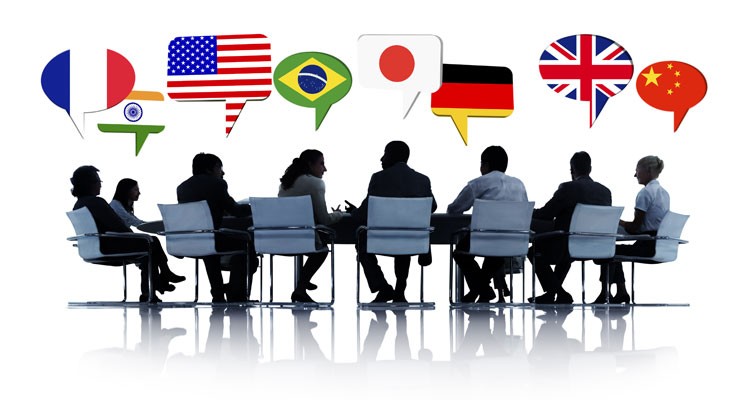Cross-Cultural Communication in Global Business
Cross-cultural communication is the backbone of international business operations. As organizations expand across borders, the ability to navigate diverse cultural landscapes becomes a necessity rather than a choice.
Misinterpretations, biases, and communication gaps can lead to costly misunderstandings, affecting productivity, brand reputation, and profitability.
Cultural Frameworks Shape Communication:
Different cultures perceive and express messages in varying ways. For instance, high-context cultures (e.g., Japan, China) rely on implicit communication and context, whereas low-context cultures (e.g., the United States, Germany) emphasize direct verbal exchanges.
Verbal and Nonverbal Cues:
Language differences are just one aspect of communication barriers. Gestures, eye contact, body language, and even silence hold distinct meanings in different cultures. A firm handshake in one country may be a sign of confidence, whereas it might be perceived as aggressive in another.
Time Perception and Hierarchical Structures:
The way cultures perceive time influences business negotiations. Monochronic societies (e.g., the U.S., Canada) value punctuality and strict scheduling, whereas polychronic cultures (e.g., Latin America, Middle East) are more flexible with time and prioritize relationships over deadlines.
Strategies for Effective Cross-Cultural Communication
Developing strong cross-cultural communication strategies is essential for fostering international collaboration and efficiency. Organizations must adopt a multifaceted approach to ensure seamless communication among diverse teams and stakeholders.
Cultural Awareness and Sensitivity Training
Businesses should invest in cultural intelligence programs to educate employees about different communication styles, etiquettes, and traditions.
Adaptation and Flexibilit
Being open to adjusting communication approaches based on cultural context enhances collaboration. Using simple, clear language and avoiding jargon can minimize misunderstandings.
Active Listening and Empathy
Encouraging employees to actively listen and seek clarification fosters mutual understanding. Demonstrating empathy helps in building trust and strengthening professional relationships.
Leveraging Technology for Global Communication
Digital platforms facilitate real-time collaboration, but cultural nuances must still be respected in virtual meetings, emails, and instant messaging.
Overcoming Challenges in Cross-Cultural Business Interactions
Even with best practices in place, businesses often face challenges when navigating cultural differences. Identifying potential pitfalls and developing proactive solutions can enhance global business success.
Language Barriers and Translation Errors
Even fluent speakers of a common language may struggle with cultural nuances. Utilizing professional translators, bilingual employees, or AI-driven language tools can mitigate misinterpretations.
Cultural Stereotypes and Bias
Preconceived notions about certain nationalities or ethnic groups can lead to discrimination and workplace tension. Businesses must promote inclusivity and encourage employees to challenge biases.
Conflict Resolution in Multicultural Teams
Disagreements in multicultural environments stem from diverse viewpoints and expectations. A structured approach to conflict resolution, emphasizing diplomacy and respect, ensures smooth collaboration.
Legal and Ethical Considerations
Cultural differences influence business ethics. What is acceptable in one country may be frowned upon in another. Companies must remain compliant with international regulations while respecting local customs.
The Future of Cross-Cultural Communication in Business
With globalization advancing at an unprecedented pace, businesses must continually refine their communication strategies. The future of cross-cultural business interactions will be shaped by technological advancements, evolving workplace dynamics, and shifting consumer preferences.
Artificial Intelligence and Language Processing
AI-powered translation tools and real-time interpretation software are reducing language barriers and enabling smoother international collaboration.
Remote Work and Virtual Collaboration
The rise of remote teams requires organizations to establish clear guidelines for cross-cultural virtual communication to maintain productivity and inclusivity.
Intercultural Leadership Development
Future business leaders must possess high cultural intelligence (CQ) to drive global expansion and lead diverse teams effectively.
Personalization in Customer Relations
Companies are leveraging data analytics to tailor their communication strategies according to the cultural preferences of their global customer base.
Conclusion
Cross-cultural communication is no longer an optional skill but a fundamental business competency. Organizations that invest in cultural intelligence, inclusive policies, and adaptive communication strategies will thrive in the competitive global market.
References:
[1] Harvard Business Review - Cross-Cultural Management
[2] Forbes - The Importance of Cultural Intelligence
[3] MIT Sloan - Navigating Cultural Differences
[4] McKinsey & Company - Diversity and Inclusion in Global Business
[5] World Economic Forum - The Role of Cultural Competence in Globalization
[6] BBC Worklife - How Cultural Differences Affect Business
[7] The Guardian - The Future of Global Business Communication
[8] PwC - The Impact of Cross-Cultural Communication on Business
[9] Deloitte Insights - Global Business and Cultural Adaptation
[10] Stanford Business - Leadership in a Globalized World







































![[LIVE] Engage2Earn: Dutton = MAGA](https://cdn.bulbapp.io/frontend/images/e12661b2-74fa-4cd8-b554-51be7f6fec4f/1)



















